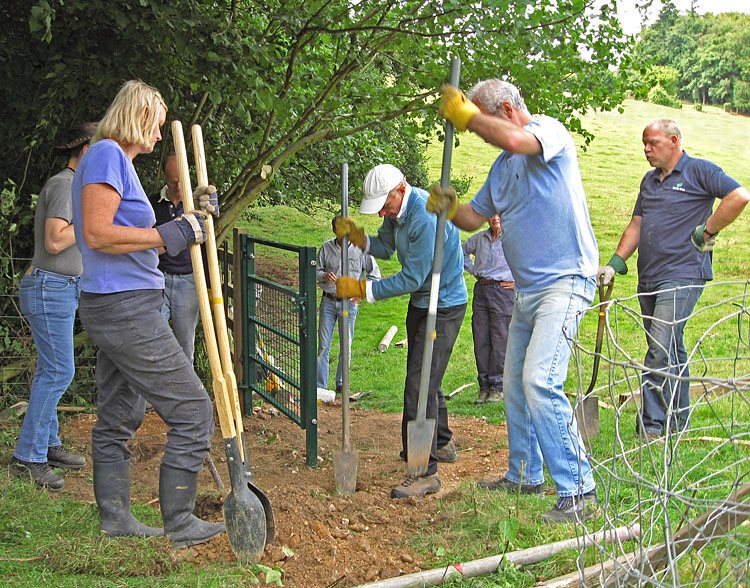Established in 2016, the West Oxfordshire Farmland Bird Project monitors farmland bird populations and is helping to turn around the declines of key farmland bird species in West Oxfordshire (Tree Sparrows, Skylarks, Yellowhammers and Corn Buntings). This effort includes using bird ringing surveys, nest recording and observational surveys to monitor the status of farmland bird populations and reporting back to farmers and landowners with ideas for how the habitat and management can be improved. The number of landowners and farmers they work with has grown from three in 2016 to over 20 now.
The TOE grants awarded have funded ringing and survey equipment for the volunteers involved with this group. Equipment includes mist nets and poles, and, most recently, a contribution towards a thermal imaging camera.
Thermal imaging now allows the volunteers to conduct surveys of species that are difficult to monitor accurately during the day. For instance, Snipe, Jack Snipe, Woodcock, Skylarks and Corn Buntings remain incredibly well hidden in low vegetation until flushed at close proximity making it difficult to conduct daytime observational counts without causing a degree of disturbance to the birds. However, thermal camera can pick up the heat from such species when hiding and foraging in low vegetation thus allowing them to be counted from a distance without causing birds to flush from their foraging or roosting sites. This also applies to observational counts at night where using torches can cause disturbance to roosting or foraging.
The West Oxfordshire Farmland Bird Group told us that
“The TVERC Recorders’ Fund grant has been fundamental in the setting up and development of the West Oxfordshire Farmland Bird Project.
Without the funds provided by TOE, we would not have been able to conduct the extensive bird survey work we currently undertake over a large part of Oxfordshire. Thanks to the survey equipment funded through the funding from TOE we have been able to gain an incredible insight into the health of our farmland bird populations and discover fascinating behaviours of a many of our fastest-declining farmland birds.
The main aim of this survey work has been to provide farmers and landowners with real time data on the state of their farmland birds and, thereby, help inform conservation efforts at a farm, local and regional scale.
There is always more work that can be done but, so far, with the funding and support from TOE, we have made great steps in involving farmers and landowners more closely in conservation efforts of farmland birds in Oxfordshire. As a result, we are beginning to see positive signs of increases in the farmland bird populations at many of our study sites.”


























